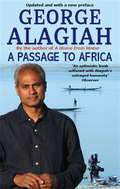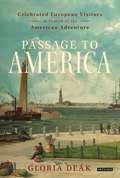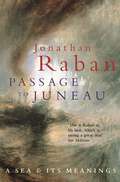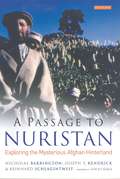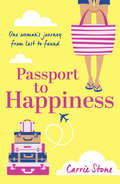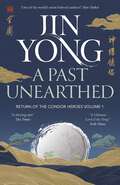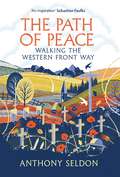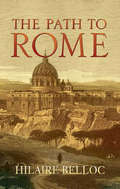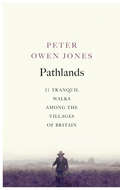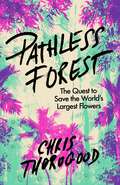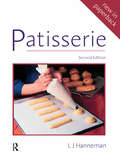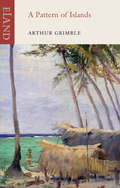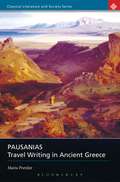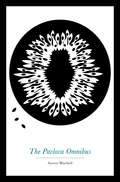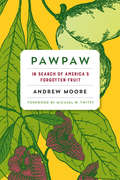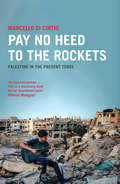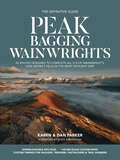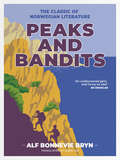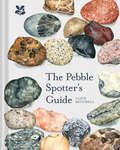- Table View
- List View
A Passage To Africa
by George AlagiahAs a five-year-old, George Alagiah emigrated with his family to Ghana - the first African country to attain independence from the British Empire. A PASSAGE TO AFRICA is Alagiah's shattering catalogue of atrocities crafted into a portrait of Africa that is infused with hope, insight and outrage. In vivid and evocative prose and with a fine eye for detail Alagiah's viewpoint is spiked with the freshness of the young George on his arrival in Ghana, the wonder with which he recounts his first impressions of Africa and the affection with which he dresses his stories of his early family life. A sense of possibility lingers, even though the book is full of uncomfortable truths. It is a book neatly balanced on his integrity and sense of obligation in his role as a writer and reporter. The shock of recognition is always there, but it is the personal element that gives A PASSAGE TO AFRICA its originality. Africa becomes not only a group of nations or a vast continent, but an epic of individual pride and suffering.
Passage to America: Celebrated European Visitors in Search of the American Adventure
by Gloria DeákAmerica was a source of fascination to Europeans arriving there during the course of the nineteenth century. At first glance, the New World was very similar to the societies they left behind in their native countries, but in many aspects of politics, culture and society, the American experience was vastly different – almost unrecognisably so – from Old World Europe. Europeans were astounded that America could survive without a monarch, a standing army and the hierarchical society which still dominated Europe. Some travellers, such as the actress Fanny Kemble, were truly convinced America would eventually revert to a monarchy; others, such as Frances Wright and even Oscar Wilde, took their opinions further, and attempted to fix aspects of America – described in 1827 by the young Scottish captain Basil Hall, as 'one of England's “occasional failures”'. Many prominent visitors to the United States recorded their responses to this emerging society in their diaries, letters and journals; and many of them, like the fulminating Frances Trollope, were brutally and offensively honest in their accounts of the New World. They provide an insight into an America which is barely recognizable today whilst their writings set down a diverse and lively assortment of personal travel accounts. This book compares the impressions of a group of discerning and prominent Europeans from the cultural sphere – from the writers Charles Dickens, William Makepeace Thackeray and Oscar Wilde to luminaries of music and theatre such as Tchaikovsky and Fanny Kemble. Their reactions to the New World are as revealing of the European and American worlds as they are colourful and varied, providing a unique insight into the experiences of nineteenth century travelers to America.
Passage To Juneau: A Sea And Its Meanings (Vintage Departures Ser.)
by Jonathan RabanAn entrancing travelogue from celebrated writer, Jonathan Raban.First published in 1999, Passage to Juneau is an account of Raban's personal journey from Seattle to the Alaskan Capital by boat through the meandering sea route, the Inside Passage, told in parallel to the same voyage taken by Captain George Vancouver in the late eighteenth century.Described by Ian McEwan as 'Raban at his best', this is extraordinary travel writing, told from two very different perspectives. A book about the idea of loss, Raban is home but still, he is very much still at sea.
A Passage to Nuristan: Exploring the Mysterious Afghan Hinterland
by Nicholas Barrington Reinhard Schlagintweit Joseph T. KendrickDespite its recent upheavals, for most of the twentieth century Afghanistan was a sleepy, faraway place of little interest to outsiders. Nowhere was the romance and mystery attached to the country more dramatically expressed than in its Nuristan region (formerly Kafiristan – Land of Infidels). Here, the spectacular mountains and lush but inaccessible valleys have, for centuries, been home to one of the world's least known peoples. Isolated in their mountain villages, the Nuristanis were only converted to Islam at the end of the nineteenth century. A Passage to Nuristan is the story of three young westerners - a Briton, an American and a German –who in 1960 set out to penetrate a land that few westerners had set eyes on. Unable to rely on maps or information on what would confront them, they were guided step by precarious step into the unknown world previously immortalised by Kipling's The Man Who Would be King. This is the contemporary record – now published for the first time – of an extraordinary journey. It will fascinate all who are interested in Afghanistan, Central Asia and travel. At the same time it captures the essence of a time and a place now gone forever.
Passage to Wonderland: Rephotographing Joseph Stimson's Views of the Cody Road to Yellowstone National Park, 1903 and 2008
by Michael A. AmundsonIn 1903 the Cody Road opened, leading travelers from Cody, Wyoming, to Yellowstone National Park. Cheyenne photographer J. E. Stimson traveled the route during its first week in existence, documenting the road for the state of Wyoming's contribution to the 1904 World's Fair. His images of now-famous landmarks like Cedar Mountain, the Shoshone River, the Holy City, Chimney Rock, Sylvan Pass, and Sylvan Lake are some of the earliest existing photographs of the route. In 2008, 105 years later, Michael Amundson traveled the same road, carefully duplicating Stimson's iconic original photographs. In Passage to Wonderland, these images are paired side by side and accompanied by a detailed explanation of the land and history depicted. Amundson examines the physical changes along "the most scenic fifty miles in America" and explores the cultural and natural history behind them. This careful analysis of the paired images make Passage to Wonderland more than a "then and now" photography book--it is a unique exploration of the interconnectedness between the Old West and the New West. It will be a wonderful companion for those touring the Cody Road as well as those armchair tourists who can follow the road on Google Earth using the provided GPS coordinates. The University Press of Colorado gratefully acknowledges the generous support of the Charles Redd Center for Western Studies at Brigham Young University toward the publication of this book.
Passenger ship (Large Print)
This large passenger ship is shown from the side. There is a locator dot shown, which will be at the top left of the page when the image is the right way up. The front (bow) of the ship is on the left of the page, and the rear (stern) of the ship is on the right of the page. Along the bottom of the ship is the hull which has a row of porthole windows. Above the hull are the upper decks. There are two more rows of portholes, one for each deck. In the top left corner of the upper decks there is a window for the captain. Along the very top of the ship, there is a tall radio mast and to the right of this a big funnel with smoke coming out of the top.
Passenger ship (UEB Contracted)
This large passenger ship is shown from the side. There is a locator dot shown, which will be at the top left of the page when the image is the right way up. The front (bow) of the ship is on the left of the page, and the rear (stern) of the ship is on the right of the page. Along the bottom of the ship is the hull which has a row of porthole windows. Above the hull are the upper decks. There are two more rows of portholes, one for each deck. In the top left corner of the upper decks there is a window for the captain. Along the very top of the ship, there is a tall radio mast and to the right of this a big funnel with smoke coming out of the top.
Passenger ship (UEB uncontracted)
This large passenger ship is shown from the side. There is a locator dot shown, which will be at the top left of the page when the image is the right way up. The front (bow) of the ship is on the left of the page, and the rear (stern) of the ship is on the right of the page. Along the bottom of the ship is the hull which has a row of porthole windows. Above the hull are the upper decks. There are two more rows of portholes, one for each deck. In the top left corner of the upper decks there is a window for the captain. Along the very top of the ship, there is a tall radio mast and to the right of this a big funnel with smoke coming out of the top.
Passport to Happiness
by Carrie StoneAn inspiring and escapist read – Eat, Pray, Love meets Bridget Jones!
A Past Unearthed: Return of the Condor Heroes Volume 1 (Legends of the Condor Heroes)
by Jin YongTHE CHINESE "LORD OF THE RINGS" - NOW IN ENGLISH FOR THE FIRST TIME.THE SERIES EVERY CHINESE READER HAS BEEN ENJOYING FOR DECADES - 300 MILLION COPIES SOLD."Western fantasy has JRR Tolkien, but we Asian fantasy authors have Jin Yong's stories in our DNA. The debt we owe him is immeasurable" SHELLEY PARKER-CHAN"If you haven't read Jin Yong's work, you haven't yet fully experienced the fantasy genre" FONDA LEECHINA , 1237 A.D.Genghis Khan is dead, but the Mongolians, led by his son, continue their assault on the Central Plains.A new generation of martial artists has emerged to face this threat, foremost among them Guo Jing and his wife Lotus Huang. And a new danger stalks the land, with all the fury of a woman scorned - Blithe Li, the Red Serpent Celestial. It is an encounter with this pitiless foe that reunites Guo Jing with Penance, the son of his treacherous sworn brother, Yang Kang. He resolves to lift the boy from a life of vagrancy and initiate him into the martial world.Placed under the care of the Quanzhen Sect at their temple in the Zhongnan Mountains, Penance stumbles across the mysterious history behind this most respected martial school. What he uncovers sends him on a journey that will force him to come to terms with his father's past and the secrets of his own heart.Translated from the Chinese by Gigi Chang
The Path of Peace: Walking the Western Front Way
by Anthony Seldon***A Waterstones Best Books of 2022 pick***'The Western Front Way, an idea that waited 100 years for its moment, is the simplest and fittest memorial yet to the agony of the Great War. Anthony Seldon's account of how he walked it, and what it means to all of us, will be an inspiration to younger generations.' Sebastian Faulks'A deeply informed meditation on the First World War, an exploration of walking's healing power, a formidable physical achievement... and above all a moving enactment of a modern pilgrimage.' Rory Stewart'A journey of self-discovery and a pilgrimage of peace... A remarkable book by a remarkable man.' Michael Morpurgo'An incredible journey that will move and inspire.' Bear Grylls ____________________________________________Without a permanent home, a wife or a job, and with no clear sense of where his life was going, Anthony Seldon set out on a 35-day pilgrimage from the French-Swiss border to the English Channel.The route of his 1,000 kilometre journey was inspired by a young British soldier of the First World War, Alexander Douglas Gillespie, who dreamed of creating a 'Via Sacra' that the men, women and children of Europe could walk to honour the fallen. Tragically, Gillespie was killed in action, his vision forgotten for a hundred years, until a chance discovery in the archive of one of England's oldest schools galvanised Anthony into seeing the Via Sacra permanently established.Tracing the historic route of the Western Front, he traversed some of Europe's most beautiful and evocative scenery, from the Vosges, Argonne and Champagne to the haunting trenches of Arras, the Somme and Ypres. Along the way, he wrestled heat exhaustion, dog bites and blisters as well as a deeper search for inner peace and renewed purpose. Touching on grief, loss and the legacy of war, The Path of Peace is the extraordinary story of Anthony's epic walk, an unforgettable act of remembrance and a triumphant rediscovery of what matters most in life.____________________________________________'Timely, poignant and passionate. Seldon skillfully weaves the personal with the historical.' Katya Adler'A timely, eloquent and convincing reminder that to forget the carnage of the past is to open the door to it happening again.' George Alagiah'A haunting, intense, enjoyable and memorable book.' Tristan Gooley'A dazzling journey... The Path of Peace is a beautiful and generous gift.' Olivette Otele
The Path to Rome
by Hilaire BellocHilaire Belloc's best work — according to the author, as well as most critics — The Path to Rome is less concerned with Rome itself than with a pilgrim's journey to the Eternal City. A spirited Catholic apologist, Belloc traveled on foot from Toul (near Nancy), France, and crossed the Alps and the Apennines in order to, in his words, "see all Europe which the Christian Faith has saved." Afterward, he turned his pen from his usual polemics to literature, and related in finely crafted prose his myriad experiences with the people he met along the way, as well as his reflections on tradition, politics, landscape, and much else. Throughout, the work abounds in Belloc's inimitable wit and good humor, and displays his profound love for the land, his faith, and his fellow man.
Pathlands: 21 Tranquil Walks Among the Villages of Britain
by Peter Owen Jones'When we walk, we walk through two landscapes: an exterior land of trees, seas, cities, mountains and fields but we also follow the paths that lead into our own interior world.'This thoughtful, and beautifully written, book offers 21 circular walks. They span the length and breadth of the British Isles: Suffolk, Northamptonshire, Wiltshire, Wales, Staffordshire, Scotland, Sussex and Cornwall are just a few of the varied landscapes that they cover.As one of the prime 'walks correspondents' of The Sunday Times, Peter Owen Jones already has a loyal following. This book will only increase his audience, and will be both for those who love walking in the countryside and those who enjoy reading, and musing on it, in their armchair at home.
Pathless Forest: The Quest to Save the World’s Largest Flowers
by Dr Chris ThorogoodThe incredible story of one man's obsession to find and protect the world's largest flowers As a child, Chris Thorogood dreamed of seeing Rafflesia - the plant with the world's largest flowers. He crafted life-size replicas in an abandoned cemetery, carefully bringing them to life with paper and paint. Today he is a botanist at the University of Oxford's Botanic Garden and has dedicated his life to studying the biology of such extraordinary plants, working alongside botanists and foresters in Southeast Asia to document these huge, mysterious blooms.Pathless Forest is the story of his journey to study and protect this remarkable plant - a biological enigma, still little understood, which invades vines as a leafless parasite and steals its food from them. We join him on a mind-bending adventure, as he faces a seemingly impenetrable barrier of weird, wonderful and sometimes fearsome flora; finds himself smacking off leeches, hanging off vines, wading through rivers; and following indigenous tribes into remote, untrodden rainforests in search of Rafflesia's ghostly, foul-smelling blooms, more than a metre across.We depend on plants for our very existence, but two in five of the world's species are threatened with extinction - nobody knows how many species of Rafflesia might already have disappeared through deforestation. Pathless Forest is part thrilling adventure story and part an inspirational call to action to safeguard a fast-disappearing wilderness. To view plants in a different way, as vital for our own future as for that of the planet we share. And to see if Rafflesia itself can be saved.
Patisserie
by Leonard J HannemanThis classic book, widely known and used by patissiers is a professional text on the art of patisserie. In the twenty years that Patisserie has been published there have been great changes in almost every aspect of this art, and the author has thoroughly updated this new edition to take account of these.Updated in paperback format the revised edition of this classic text is now even more affordable, practical and enjoyable. Complete with the original, beautiful seventy-three colour photographs, each shows clearly how the finished product should be presented, and a wide range of diagrams demonstrate the more complex processes.New dishes have been added, for example, pavlova, sticky toffee pudding, blinis, pasta dough, frangipan apple, cheesecake, and sugar balls, while some of the existing ones have been amended or replaced. Additional information on fruits, and on using eggs or egg substitutes in patisserie have been included. Of special interest are the chapters on equipment, commodities, and hygiene, which include the provisions of the Food Hygiene (Amended) Regulations 1990, as far as they affect the patisserie section of the catering industry.
Patisserie
by Leonard J HannemanThis classic book, widely known and used by patissiers is a professional text on the art of patisserie. In the twenty years that Patisserie has been published there have been great changes in almost every aspect of this art, and the author has thoroughly updated this new edition to take account of these.Updated in paperback format the revised edition of this classic text is now even more affordable, practical and enjoyable. Complete with the original, beautiful seventy-three colour photographs, each shows clearly how the finished product should be presented, and a wide range of diagrams demonstrate the more complex processes.New dishes have been added, for example, pavlova, sticky toffee pudding, blinis, pasta dough, frangipan apple, cheesecake, and sugar balls, while some of the existing ones have been amended or replaced. Additional information on fruits, and on using eggs or egg substitutes in patisserie have been included. Of special interest are the chapters on equipment, commodities, and hygiene, which include the provisions of the Food Hygiene (Amended) Regulations 1990, as far as they affect the patisserie section of the catering industry.
A Pattern of Islands (Ulverscroft Large Print Ser.)
by Arthur GrimbleArthur Grimble was sent to the Gilbert and Ellice islands as a colonial administrator in the twilight of the Edwardian era. He lived there for the next twenty-five years and developed a rare passion for the language, life and landscape of the place. Fortunately his island neighbours, a fascinating cast of fishermen, sorcerers, poets and fighters, began to trust this charming, happy and energetic young man, and shared with him their treasury of stories from the days when warfare was endemic and magic an essential part of everyday life. A Pattern of Islands is a rich and complex cultural history of the dances and legends, rituals, spells and way of life of the islands. It is also a riproaring adventure story. Grimble learns to spear hungry sharks, to negotiate fearsome reefs and, on one terrifying day, is used as human bait to catch a giant squid.
Pausanias: Travel Writing in Ancient Greece (Classical Literature and Society)
by Maria PretzlerIn this book, Maria Pretzler combines a thorough introduction to Pausanias with exciting new perspectives. She considers the process and influences that shaped the "Periegesis", and maps out its literary and cultural context. Pausanias' text records contemporary interpretations of monuments and traditions, and is concerned with the identity and history of Greece, issues that were crucial concerns for Greeks under Roman rule. Parallels with various texts of the period offer insights into Pausanias' attitudes as well as illustrating important aspects of Second Sophistic culture. A discussion of Greek texts that deal with fictional or actual travel experiences provides a background for a detailed study of the Periegesis as travel literature. Pausanias' treatment of geography and his descriptions of landscapes, cities and artworks are considered in detail, and there is also a study of his methods as a historian. The final chapters deal with Pausanias' impact on modern approaches to Greece and ancient Greek culture.
Pausanias: Travel Writing in Ancient Greece (Classical Literature and Society)
by Maria PretzlerIn this book, Maria Pretzler combines a thorough introduction to Pausanias with exciting new perspectives. She considers the process and influences that shaped the "Periegesis", and maps out its literary and cultural context. Pausanias' text records contemporary interpretations of monuments and traditions, and is concerned with the identity and history of Greece, issues that were crucial concerns for Greeks under Roman rule. Parallels with various texts of the period offer insights into Pausanias' attitudes as well as illustrating important aspects of Second Sophistic culture. A discussion of Greek texts that deal with fictional or actual travel experiences provides a background for a detailed study of the Periegesis as travel literature. Pausanias' treatment of geography and his descriptions of landscapes, cities and artworks are considered in detail, and there is also a study of his methods as a historian. The final chapters deal with Pausanias' impact on modern approaches to Greece and ancient Greek culture.
The Pavlova Omnibus
by Austin MitchellAn omnibus containing Austin Mitchell’s classic books THE HALF-GALLON QUARTER-ACRE PAVLOVA PARADISE and PAVLOVA PARADISE REVISITED, available for the first time in ebook.
Pawpaw: In Search of America’s Forgotten Fruit
by Andrew Moore Michael W. TwittyThe largest edible fruit native to the United States tastes like a cross between a banana and a mango. It grows wild in twenty-six states, gracing Eastern forests each fall with sweet-smelling, tropical-flavored abundance. Historically, it fed and sustained Native Americans and European explorers, presidents, and enslaved African Americans, inspiring folk songs, poetry, and scores of place names from Georgia to Illinois. Its trees are an organic grower’s dream, requiring no pesticides or herbicides to thrive, and containing compounds that are among the most potent anticancer agents yet discovered. So why have so few people heard of the pawpaw, much less tasted one? In Pawpaw—a 2016 James Beard Foundation Award nominee in the Writing & Literature category—author Andrew Moore explores the past, present, and future of this unique fruit, traveling from the Ozarks to Monticello; canoeing the lower Mississippi in search of wild fruit; drinking pawpaw beer in Durham, North Carolina; tracking down lost cultivars in Appalachian hollers; and helping out during harvest season in a Maryland orchard. Along the way, he gathers pawpaw lore and knowledge not only from the plant breeders and horticulturists working to bring pawpaws into the mainstream (including Neal Peterson, known in pawpaw circles as the fruit’s own “Johnny Pawpawseed”), but also regular folks who remember eating them in the woods as kids, but haven’t had one in over fifty years. As much as Pawpaw is a compendium of pawpaw knowledge, it also plumbs deeper questions about American foodways—how economic, biologic, and cultural forces combine, leading us to eat what we eat, and sometimes to ignore the incredible, delicious food growing all around us. If you haven’t yet eaten a pawpaw, this book won’t let you rest until you do.
Pay No Heed to the Rockets: Palestine in the Present Tense
by Marcello Di CintioAcross Palestine, from the Allenby Bridge and Ramallah, to Jerusalem and Gaza, Marcello Di Cintio has met with writers, poets, librarians, booksellers and readers, finding extraordinary stories in every corner. Stories of how revolutionary writing was smuggled from the Naqab Prison; lost stories surrounding the looted books that sit in Israel’s National Library; and stories from the Gallery Café, whose opening three thousand creative intellectuals gathered to celebrate. Pay No Heed to the Rockets offers a window into the literary heritage of Palestine, revealing a humanity often unreported. Paying homage to the memory of giants like Mahmoud Darwish and Ghassan Kanafani and the contemporary authors whom they continue to inspire, this evocative, lyrical journey shares both the anguish and inspiration of Palestinian writers at work today.
Peak Bagging: 45 routes designed to complete all 214 of Wainwright's Lake District fells in the most efficient way
by Karen Parker Dan ParkerOver fifty years ago, renowned British hillwalker and guidebook author Alfred Wainwright described 214 peaks in the English Lake District in his seven-volume illustrated Pictorial Guide to the Lakeland Fells. Like the Munros in Scotland, bagging all the Wainwrights has become a popular and significant challenge for walkers and runners, often taking many years in fits and starts because of the absence of a clear plan for how to link them together.With this problem in mind, Peak Bagging: Wainwrights by Karen and Dan Parker features forty-five routes designed to link up these iconic fells so you can enjoy the challenge of completing them at your own pace – over years, months or even just a few weeks. It presents not only the most efficient routes for completing the Wainwrights as quickly as possible, but does so in such a way that each route is a fantastic walk or run in its own right. The featured routes include a round of the Scafells, and the Glenridding Horseshoe, taking in Helvellyn and Catstycam.The routes are split into seven sections, reflecting Wainwright’s seven Pictorial Guides, and to simplify logistics, all of the featured routes are circular with an emphasis on making practical links between the summits. In addition, the book is packed with useful information, including 1:40,000-scale maps, elevation profiles, public transport and parking details, refreshments, downloadable GPX files for each route and custom timings for walkers, trekkers, fastpackers and runners. Also included are overview details of Steve Birkinshaw’s then-record-breaking sub-seven-day Wainwrights run in 2014 – current record holder Sabrina Verjee completed the round in under six days. Whatever your timescale for completing the 214 Wainwrights, Peak Bagging: Wainwrights is the indispensable guide to this British hill challenge.
Peaks and Bandits: The classic of Norwegian literature
by Alf Bonnevie BrynIn 1909, while dreaming of the Himalaya, Norwegian mountaineer Alf Bonnevie Bryn and a fellow young climber, the Australian George Ingle Finch, set their sights on Corsica to build their experience. The events of this memorable trip form the basis of Bryn’s acclaimed book Tinder og banditter – ‘Peaks and Bandits’, with their boisterous exploits delighting Norwegian readers for generations. Newly translated by Bibbi Lee, this classic of Norwegian literature is available for the first time in English.Although Bryn would go on to become a respected mountaineer and author, and Finch would become regarded as one of the greatest mountaineers of all time – a legend of the 1922 Everest expedition – Peaks and Bandits captures them on the cusp of these achievements: simply two students taking advantage of their Easter holidays, their escapades driven by their passion for climbing. As they find themselves in unexpected and often strange places, Bryn’s sharp and jubilant narrative epitomises travel writing at its best.Balancing its wit with fascinating insight into life in early twentieth-century Corsica, the infectious enthusiasm of Bryn’s narrative has cemented it as one of Norway’s most treasured adventure books. Peaks and Bandits embodies the timeless joy of adventure.
The Pebble Spotter's Guide
by Clive Mitchell National Trust BooksA beautiful little guide to one of life's simple pleasures – pebble spotting. Where science meets mindfulness. Learn to appreciate their beauty, discover the amazing journey that brought them to you, search for the rare ones. Leave no stone unturned.
